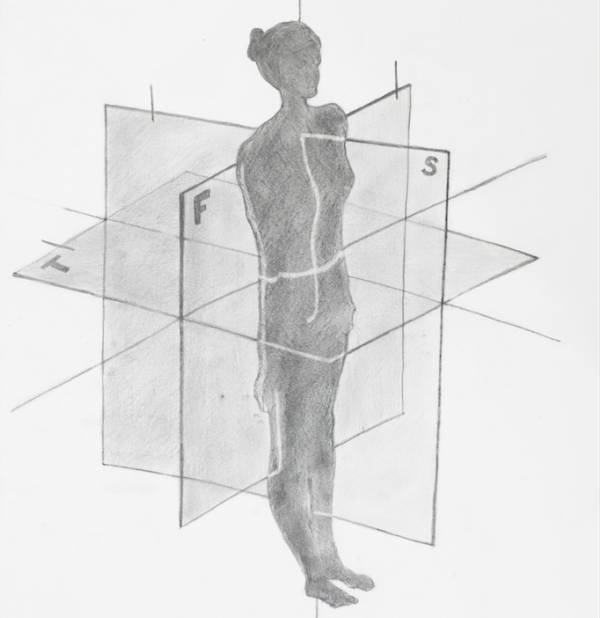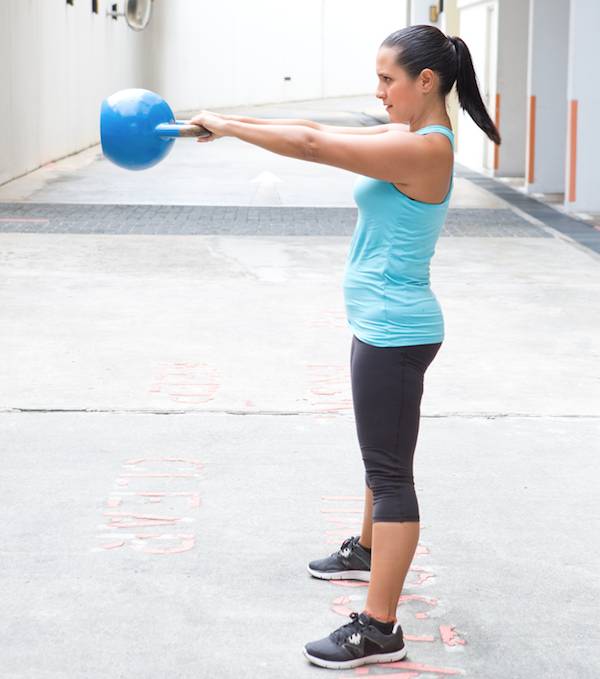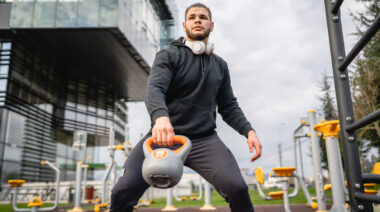Learning kettlebells is no easy task. When I heard about this method of training over a decade ago, I was turned on by the notion of swinging giant orbs of iron. But at the same time, I was intimidated at the thought of injuring myself.
Through the years, I heard horror stories of people “training” with kettlebells a few times and then stopping after becoming injured. But recently, I decided to stop listening to the stories and, instead, listened to experts who were and are successfully applying kettlebell training.
In this article, I am sharing my findings and personal experiences as I journeyed into kettlebells. Included is my process of shopping for and finding expert training. My goals were to:
- Rehabilitate decades-old injuries
- Break out of physical weaknesses
- Find a suitable method of cross training to support my long-distance trail running and professional yoga practice
Getting Started
I chose to begin my kettlebell training with a long-time MMA advocate, Special Ops trainer, and someone for whom I have an immense amount of respect. He sustained a significant neck injury from a helicopter crash in 2008. The road to his recovery was long and included physical therapists, occupational therapists, yoga, and chiropractic treatment. He believes that applying proper kettlebell training was responsible for his dynamic recovery.
In a one-on-one session, my friend taught me proper handling of the bell and the key concepts to avoid injury. As a beginner, developing proper handling habits and alignment are crucial to avoiding injury and building functional strength.
“From the time someone picks up the kettlebell to the time he or she sets it back on the floor, awareness and biomechanics are essential, regardless of the size of the bell.”
From the time someone picks up the kettlebell to the time he or she sets it back on the floor, awareness and biomechanics are essential, regardless of the size of the bell. We need to practice the right way – every time. Repetition builds muscle memory, and because we are using the bells to build strength and improve posture, every movement counts for or against us. So, even if you have previous experience with strength training, it’s good to start with a lighter weight.
Momentum and leverage facilitate the movements of the bell. When you begin swinging these weights, they can literally destabilize you and pull you out of balance. Practice feeling for when the bells when move away from the midline of your body. The midline is an imaginary line, also known as the sagittal plane, drawn down the center of your body, from head to toe. It separates the left side from the right and traces from the crown of your head, between your eyes, center of your nose, down your sternum, and all the way to your pubic bone.

S is for the sagittal plane.
The body is strongest in its center. Doing movements off center by as little as two inches from right or left of the midline makes the kettlebells feel heavier and require greater muscular exertion on your part. To minimize unnecessary torque on muscles and joints, use these three key concepts:
- Keep the knees soft with a slight bend
- Contract the glutes during pelvic thrusts
- Pull the shoulders back
It is common for people working out in a mainstream gym to observe someone else using kettlebells and, in moments of curiosity, imitate what they see without first receiving proper training. Do yourself a favor – hire a qualified kettlebell trainer. You will have a better appreciation for the weights, quickly add strength, and learn how to minimize strain.
How to Avoid Injury
Kettlebells can be used for isolated muscle strengthening, but they are more widely used for integrating muscle groups for whole-body exercises. When movements are synchronized, this creates fluid and closed-kinetic chain exercises.
Two muscle groups highlighted in kettlebell work are the shoulders and glutes. The deltoid group facilitates the handling and swinging, and the glutes contract to create strong alignment for the fluid swing. In the beginning, all these movement patterns can feel jerky. In time, your strength and movement will become balanced in your anterior, medial, and posture deltoids. The combination of strength and body awareness will produce a better rhythm with the swing. The deltoid group is also used in pushes, pulls and presses, while recruiting additional support from the chest and upper back.

Shoulder and glute engagement with a kettlebell swing.
But don’t ever forget the glutes. The glute muscle group provides the staging point for working with the kettlebell. A trainer at a local kettlebell-specific gym pointed out that I needed to contract my glutes during both the squat and pelvic thrust. Using glute strength during these two movements protects the low back from strain and ensures the torso is supported during spinal extension.
How Training Kettlebells Is Changing My Body
After five weeks of consistently training two classes per week, I have seen and felt magnificent changes. This regimen has been incredibly helpful for both my running and yoga practice. In addition, my shoulder injuries from over a decade ago have diminished. While I still periodically feel twinges or strains, I attribute this to having a weak connection to my glutes and that I am breaking compensation patterns from old injuries.
“When movements are synchronized, this creates fluid and closed-kinetic chain exercises.”
How to Get Started Safely With Kettlebells
- Accept Being a Beginner – Allow your nervousness as a beginner to build a foundation of respect for the bell and the trainers. Don’t be another kettlebell casualty.
- Find a Respected Trainer – Ask around for recommendations of qualified and highly reputable kettlebell-specific gyms or trainers. I found placing a post on Facebook to be a helpful first step.
- Be a Good Student – Go in to your first session with the mindset to learn and be coachable. I personally had to let go of thinking that I first needed to be knowledgeable about this activity.
- Make Every Movement Count – The trainer during my one-on-one talked and demonstrated the importance of making every movement count, every time. It is part of our human design to move efficiently and with as little energy as possible. We can become haphazard and develop bad training habits by repeating improper posture or biomechanics.
Making Kettlebells Work For You
The benefits of kettlebells can vary from person to person. People use kettlebells to lose weight, strengthen, rehabilitate injury, improve range of motion, and increase flexibility. Many of the people I spoke to about kettlebells use the classes and exercises to support their main activity or sport, such as Brazilian jiu jitsu, running, and hockey.
If you are curious about how kettlebells can help you improve in your fitness or sport, I highly recommend trying it out. Search for a reputable trainer and give a class or training session a try. There are hundreds of kettlebell exercises and great trainers to help.
Read more about kettlebell training:
- All You Need to Know About Getting Started With Kettlebells
- 7 Exercises to Optimize Shoulder Health with Kettlebells
- The Kettlebell Swing: Why It’s the Perfect Exercise
- What’s New On Breaking Muscle Today
Photos courtesy of Shutterstock.






